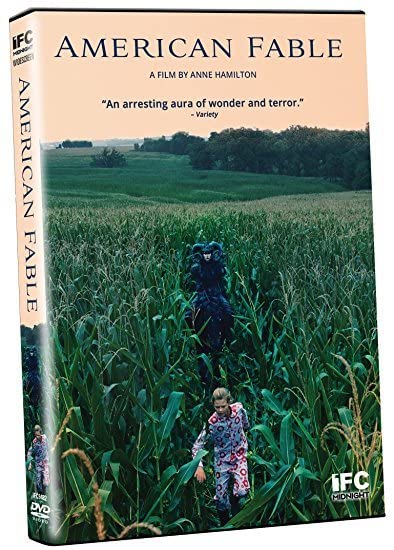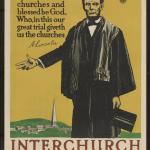Well, this is about as un-seasonal a theme as I can presently muster, but I fear that it is all too topical. Moreover, it raises issues that are going to be agitating us all a great deal in the New Year.
In 2016, an American film-maker produced a brilliant case study of a historical campaign of domestic terrorism that was rooted in religious hatred and racial nationalism. I would argue that it remains one of the vanishingly few really fine American films concerning terrorism in any era, and the circumstances surrounding an act of grave violence rooted in anti-Semitic hatred. Yet not only has the film had remarkably little impact, but literally none of the many reviewers who discussed the film ever noted the terrorist context, or related it to real-world extremism, or to anti-Semitism. In consequence, it is not mentioned even in otherwise thorough discussions of the history and literature of American terrorism.
That amnesia is stunning, but not untypical. Americans, it seems, are always doomed to assume that each act of terrorism they encounter must be new and unprecedented, and probably meriting that tired old chestnut “the time that America lost its innocence.” That point is all the more relevant given all the current concern about anti-Semitism, not to mention the focus on “Christian nationalism” in the lead-up to the 2024 elections, and now on a whole revived Patriot movement. This blog concerns both the film, and even more pointedly, the amnesia.
WARNING: I can only discuss the film by describing the plot in considerable detail, and in consequence, SUBSTANTIAL SPOILERS FOLLOW.
The film in question is American Fable, directed and written by Anne Hamilton. She is a pupil of Terrence Malick, and that visual influence shows overwhelmingly in the sumptuous depictions of the Wisconsin countryside, which in itself makes the film thoroughly worth watching even if we set aside every other detail. I am going to discuss the film as it first appears to the viewer, and then suggest what we need to know to understand it properly – as basically no critics did.
What We See In The Film
American Fable is told wholly through the eyes of Gitty, an eleven year old girl growing up in rural Wisconsin in 1982 (she is played dazzlingly by Peyton Kennedy). Local farms are in deep crisis, with farmers committing suicide, and her own family is on the brink of ruin. Gitty finds that a strange man named Jonathan is being held prisoner on their property, in an old silo. Jonathan is a Jewish financier or banker, and when I say that, please don’t assume that I am succumbing to racial stereotyping: as I will explain, both the ethnicity and the occupation are crucial. She befriends him, and comes to regard him as a kind of wonder worker. Gradually, we find that her family is holding Jonathan prisoner at the behest of a sinister outsider named Vera, who in Gitty’s childish recollection is portrayed as a Cruella Deville figure. Vera pays the family well for their services in hiding Jonathan, enough to save the farm. Gitty tries to protect and free Jonathan, despite the furious opposition of her parents and her extremely violent older brother, Martin.
Noting the “fable” title, reviewers stressed the many fantasy elements in the story, and recognized that this was a child’s eye view of the world, and the enchanted or mythical landscape she inhabits. But the actual imprisonment and the associated violence baffled most writers. The whole film seemed like the semblance of a dream. What on earth was it about? IMDB calls it “a fairytale thriller set in the 1980s rural Midwest about a courageous girl living in a dark – sometimes magical – world.” Or here is Wikipedia: “All is not as it may seem, though, as the family finds itself involved with individuals who are like something out of a fairy tale.” This is all true as far as it goes, but it goes nowhere near far enough.
What We Need To Know To Understand The Film
What no critic – none whatever – noted was the critical context of the time. I base that comment on collecting all the reviews I could trace through Google, which included the New York Times, Roger Ebert, Hollywood Reporter, Variety, and several others, here and here. I also searched the film title together with a selection of obvious keywords, and found nothing.
In the early 1980s, the American Midwest was suffering economic catastrophe, with countless farm bankruptcies and foreclosures. In response, far Right and neo-Nazi movements moved massively into those communities, with a powerful propaganda apparatus explaining that the whole problem was the work of Jews, and of Jewish finance. Major groupings included the Posse Comitatus, the Covenant, Sword and Arm of the Lord (CSA) and the Aryan Nations. Each won remarkable support, gaining at least the attention of tens of thousands of farmers and small town residents, and recruiting a good number as full adherents. In 1985, one expert claimed that
there are 5,000 to 6,000 hard-core activists in the Midwest, and seven to 10 times as many sympathizers… A dozen or more adherents can have a major effect in a county that has only 2,000 to 3,000 persons, Zeskind said. They speak to groups as large as 1,000 people, using everything from pamphlets to videotapes to spread the message that the farmers are not to blame for their misfortunes, he added. The blame is fixed first on the Federal Reserve, then on international bankers and finally on the Jews. (“Farmers’ Support of Right-Wing Radicals Told,” Los Angeles Times Sept. 22, 1985).
Some of those converts became active tax protesters, and in 1983 North Dakota farmer (and Posse Comitatus leader) Gordon Kahl was killed after two spectacular firefights with police officers.
This wildly successful political campaign then morphed into the larger terror movement in 1984-1985 associated with “The Order,” which tried to bring into reality the scenario imagined in William Pierce’s notorious novel, The Turner Diaries (1975). Frankly and comprehensively Nazi in his ideology, Pierce portrayed a national campaign that would destroy the US government, and exterminate all American racial minorities. All Jews throughout the world would be slaughtered. The Far Right groups that had so boomed in the Midwest farm crisis were centrally involved in the Order campaign, which targeted Jewish politicians, financiers, and media figures for death. Something like the kidnapping of “Jonathan” did not actually happen, but it was exactly the kind of thing they were plotting at this precise moment.
One veteran of the Order campaign as it developed was Richard Wayne Snell, who was executed in April 1995 for two murders committed in 1983-1984. In that same period, in 1983, he had also plotted to blow up the Murrah Federal Building in Oklahoma City. His death was commemorated, or avenged, by the destruction of that very same building on the day of his execution. (Coincidentally, and only coincidentally, that was also the second anniversary of the bloody climax of the Branch Davidian crisis in Waco). That 1995 Oklahoma City attack reproduced in detail the account of a spectacular bombing described in Turner Diaries.
The “fairytale thriller” of American Fable is thus set in the very early stages of one of the most threatening terrorist campaigns in American history. This is not a fairy tale: it is an all too real Wisconsin in 1982. How could anyone have forgotten it? We are talking the 1980s, not the 1880s.
What Is Really Happening In The Film
Once you know that context, so much in the film falls into place, and you wonder at how the reviewers can have missed this so utterly.
The sinister Vera is evidently a leader or emissary of one of the main Far Right networks, maybe Posse Comitatus, or CSA. When she opens her mouth, everything she says reflects the neo-Nazi ideology of that time. As she says, the world is divided into two categories, warriors and (I am guessing here, filling in a blank) serfs or puppets, or sheeple. The whole struggle is about control – and although the word “Jew” never appears once in the film, it is obvious that she is spouting the classic language of anti-Semitic conspiracy theory. They are fighting to end Jewish control, to destroy what the Order called the ZOG, the Zionist Occupation Government. Anne Hamilton catches this mood exactly, although nobody caught how splendidly she accomplished this.
Vera had approached the family a while before the story begins to sound them out on hiding the kidnap victim and they agreed. Vera is an organizer, a manipulator, for a larger terrorist conspiracy – in effect, the precursor of the actual Order that emerged fully armed in 1984. We assume that the family might have shared something of her ideology, but they were mainly driven by economic desperation.
Of course Jonathan is a Jewish financier: he is exactly the sort of person the Far Right blamed for the disasters of the time, and seizing him was a major prize for which they were happy to pay handsomely.
One striking line occurs after the demented son, Martin, cuts off Jonathan’s finger in an attempt to demand ransom money, and as they say, to make it look like a regular kidnapping. Obviously, then, this is not a regular kidnap: it is a politically motivated act of terror. That scene alone should have forced reviewers to understand what they were dealing with.
What The Film Teaches Us About Terrorism In Any Time Or Place
Remember I mentioned that division between the hard-core faithful militants and agitators and the much larger penumbra of sympathizers, who might run into the tens of thousands? That is a critical theme in classic counter-insurgency theory. Imagine when an extremist campaign moves to the stage of active violence. There are the obvious militants, the hard core shooters and bombers, whose numbers are usually tiny. But they are immensely aided by very loose networks of sympathizers who never pick up a gun, but who perform all sorts of useful tasks, such as storing illegal materials, or helping people on the run escape from the law. This is exactly the role that Gitty’s family fulfills in the film.
That “penumbra” provides a setting for the recruitment and testing of potential militants. If you observe how individuals perform in that support setting, you soon find out who can be reliably brought on to the more advanced stage of participating in direct violence. We see this process at work perfectly in American Fable, where the teenaged Martin is passing all the tests to move to a much deeper phase of involvement. Driven in part by his sexual fascination with Vera, he evidently aspires to be a warrior on the lines she advocates. It does not take much imagination to see him transformed into a lone terrorist soldier ready to risk all for the cause. We can’t fail to think of the armed berserker Gordon Kahl, or even of Timothy McVeigh.
Lord, but I wish I had had access to this film when I was teaching my regular courses on Terrorism at Penn State in bygone years. What a resource!
The film’s genius is that a highly plausible terrorist scheme that is close to historical reality is viewed entirely through the eyes of a child, who interprets it according to her limited knowledge of the world. Of course she sees it as fantasy and fairy tale – as an American fable.
If you want to glimpse an agonizing moment in the country’s turbulent recent history, watch American Fable. It is, or should be, a classic, and it should be re-released. And then, we struggle to explain how all this has fallen so deeply into oblivion.
I discussed the real-world issues raised here about terrorism in some detail in my book Images of Terror: What We Can And Can’t Know About Terrorism (Hawthorne, NY: Aldine De Gruyter, 2003).















